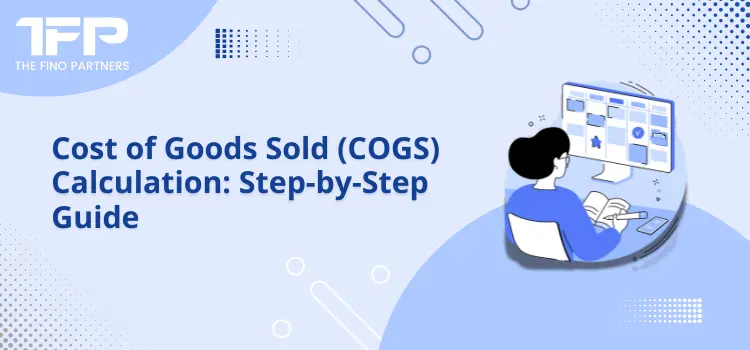If you are a business person running a little shop or a big corporation, knowing how much it costs to produce or purchase your products helps you figure out how profitable your business is. In case you use accounting and bookkeeping services, they probably handle COGS for you. However, understanding the process will enable you to make better financial choices and improve your business efficiency overall. In this article, we will explain how you can calculate COGS, so you can handle this essential element of your finances.
What Does the Cost of Goods Sold Mean?
Before we move with the calculation itself, let us to 1st make clear what COGS means. Cost of goods sold is the price of directly making or acquiring the merchandise your company sells. They include the price of raw materials, labor, along with other expenses specifically associated with production. It does not include indirect expenses as marketing, utilities or rent, though.
COGS tells you exactly how much it costs to produce the products you sell - an essential element in establishing rates and calculating profits. Basically, COGS lets you know exactly how much it costs to produce income with your products.
Why COGS Matters for Your Business
It's essential to calculate your COGS as it determines your business financial health. Adding COGS to your total sales gives you your gross profit, i.e, the money left after production expenses. The lower your COGS, the greater your net revenue (more benefit for you company).
Accurate COGS calculation also helps you make sound choices regarding pricing, inventory management and production processes. In case your COGS is too high, you have to find areas to lower costs and boost profits. Plus, COGS is necessary to track taxes because they directly affect taxable income.
Calculating COGS Step by Step
Now you know the importance of COGS, we need to see the way you calculate it. It isn't so complicated. COGS can be determined by this formula:
COGS: Beginning Inventory + Purchases During the Period - Ending Inventory.
Let us dissect each component of the formula.
1. Beginning inventory
Your start inventory refers to the quantity of Inventory you have at the outset. This could be the products you didn't sell in the prior year or quarter. In case you're new to business, you have zero starting inventory.
For instance, in case you have a footwear store and had USD 10,000 left over at the start of the year, that is your starting inventory for this particular time.
2. Purchases during the period
This includes new stock or materials you buy during the period. For instance, in case you purchased USD 5,000 of new clothes to sell in your shop, this total is added to your beginning inventory.
Include all costs related to buying the products themselves (for instance , shipping or import fees). In case your buyings for the time period were USD 5,000, you add this to your beginning inventory of USD 10,000, resulting in your total inventory cost thus far USD 15,000.
3. Ending inventory
At the end of the period you must calculate your ending Inventory. This is the value of your leftover inventory by the end of the period. You subtract this amount out of your beginning inventory (beginning inventory + purchases) to find out what you sold.
Say you sell products for a year and still have USD 3,000 left. This is your ending inventory.
Final COGS Calculation
With numbers from our example, the COGS formula looks the following :
COGS: Beginning Inventory + Purchases During the Period - Ending Inventory
COGS is equal to 10,000 + 5,000 - 3,000
COGS = 12,000
In this particular instance, the calendar year's cost of goods sold is USD 12,000. This means it cost you USD 12,000 to manufacture or get the products you sell.
COGS in Different Methods of Calculation
Now you know the basic formula, know that COGS could be computed in several different ways depending on your business model and inventory system. The following are the 3 most typical methods :
- First In, First Out (FIFO): FIFO presumes that the very first items in your inventory are also the very first products you sell. This technique works well for businesses with rising inventory prices over time and creates lower COGS and higher gross profits.
- Last In, first Out (LIFO): LIFO presumes the previous purchased product is sold first. This technique is used in organizations with high variability of inventory expenses. It typically leads to higher COGS and lower taxable income.
- Average cost method: This method averages the cost of all your inventory, no matter when it was bought, to generate COGS.
Why Should You Keep COGS Low
As a business owner, you want to keep your COGS minimal without sacrificing quality. Lower COGS means you keep more profit on your sales.
Some strategies to reduce your COGS:
- Negotiate with suppliers: Try to negotiate much better deals or substantial discounts out of your vendors.
- Increase production efficiency: Reduce waste and increase productivity with simplified processes.
- Buy in bulk: Purchasing materials in bigger quantities might lower costs per unit.
- Monitor inventory: Beware of overstocking and monitor sales trends to stay away from holding onto unsellable goods.
Final Thoughts
The cost of goods sold might seem difficult at first glance, however breaking it down step-by-step reveals that it is a manageable element of operating a productive company. Tracking your starting inventory, purchases, and ending inventory gives your COGS and insight into your business's profits.
Regardless if you handle it yourself or you employ specialized accounting and bookkeeping services, understanding COGS will enable you to make better financial choices, manage expenses, and also enhance your company's economic health.
Outsourcing accounting services can enable you to monitor your COGS and determine savings opportunities. These professionals will keep your records accurate and ensure you're paying down business expenses promptly. For expert assistance with COGS calculations and much more, consult The Fino Partners for accounting and bookkeeping services.



























